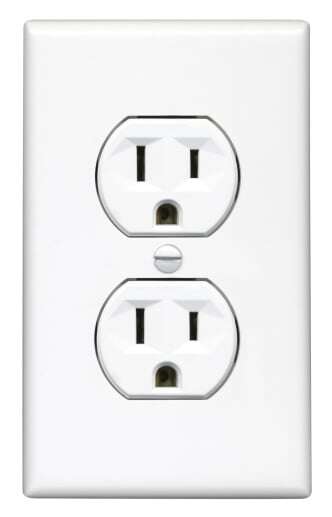 Most homes have at least one: that one electrical outlet that wiggles, jiggles or otherwise doesn't work. Or so you think.
Most homes have at least one: that one electrical outlet that wiggles, jiggles or otherwise doesn't work. Or so you think.
If you've been avoiding an outlet like this, you're smart to do so. Faulty electrical outlets are the most common cause of electrical fires, according to the U.S. Fire Administration. But you'd be even wiser to install a new outlet, the subject of this, the next article in a series of basic, do-it-yourself electrical repairs that Experts In Your Home is presenting on our blog as a service to our valued customers.
If you've already taken the first step toward this electrical repair and shopped for a new outlet at your local home improvement store, you may be wondering why electrical outlets are sometimes referred to as electrical receptacles.
The terms are used interchangeably and they basically refer to the same item. Still, an electrical receptacle usually offers more safety features. For one thing, most receptacles are grounded. And they're designed to prevent small children and curious pets from inserting fingers or paws into the openings. Some receptacles also may come with plastic safety caps, which fit into the socket when it's not being used. These caps can come in handy if you're worried about water, rainwater or other liquids unintentionally seeping into the socket. Such may be the case with sockets located in kitchens or near entry and exit doors.
Supplies You'll Need to Install an Outlet/Receptacle
Now that you know the benefits of receptacles, we hope you'll consider using one for this electrical repair. You also will need:
- Electrical tape
- Pliers
- Replacement receptacle (a 15-amp receptacle for those boxes using No. 14 wires and a 20-amp receptacle for those using No. 12 wires)
- Screwdriver
- Voltage tester
- Wire strippers
Steps to Installing an Outlet/Receptacle
As with all electrical repairs, eliminate any distractions so that you can fully concentrate. Then turn off the power to the circuit at your fuse box and proceed to:
- Use the voltage tester to ensure that the power is indeed off.
- Remove the cover plate on the outlet and remove the screws. Pull out the receptacle without touching the wires or terminals.
- Check the wires for power with the voltage tester. The neutral wire should be connected to the silver terminal and the hot wire should be connected to the brass terminal.
- Unscrew the terminals and carefully pull away the wires. If they appear to be damaged, snip off the end and restrip it. To do this, squeeze the wire about one-quarter inch from the end with the wire strippers. Pull the strippers toward the end of the wire and twist until the insulation slides off, thereby stripping the wire. (Please note: don't take the risk of using a knife for this task. Even if you're careful, the knife can slip and cause you to injure your hands. A knife also could damage the wires. So for all reasons, invest in a good pair of wire strippers with notches to fit wires of various sizes).
- Install the new receptacle, attaching the white wire to the silver terminal and the black or colored wires to the brass terminals.
- Wrap the terminals and wires with electrical tape.
- Push the outlet back into the box. Tighten the mounting screws, being sure that the receptacle is straight.
- Screw on the cover plate and restore the power.
After replacing one or two outlets, you might be surprised how much your confidence with electrical repairs will surge—and how you'll never tolerate another wiggling, jiggling outlet again. Still, if you get stuck along the way or encounter a problem, don't hesitate to reach out to Experts In Your Home. Our local Chico electricians are experts in your home.
Related Articles:
DIY Electrical Repair: How to Replace a Light Switch
DIY Electrical Repair: How to Safely Change a Lightbulb
Don't try these electrical jobs at home - find out which jobs you should hire a pro for with this FREE guide:








